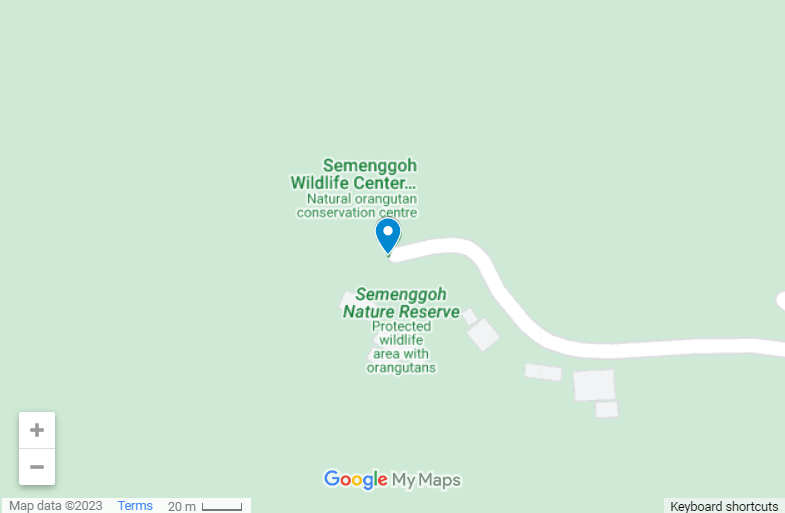If there is one place that you should head when you visit Kuching, it is this one. The Semenggoh Wildlife Centre.
Located in the Semenggoh Nature Reserve, the Semenggoh Wildlife Centre Sarawak Malaysia is the place to go in this part of Malaysia to see orangutans. These famous red-haired apes are amazing creatures which can only be found on Sumatra (Indonesia) and the island of Borneo. A trip to Borneo simply isn’t complete without viewing orangutans up close.
Just 35 minutes drive from the riverfront in the centre of Kuching, the feeding platforms at the Semenggoh Orangutan Wildlife Centre are the easiest and most likely way you’ll see orangutans. While sightings can never be guaranteed, at least one orangutan is likely to show up if you visit during one of the feeding times.
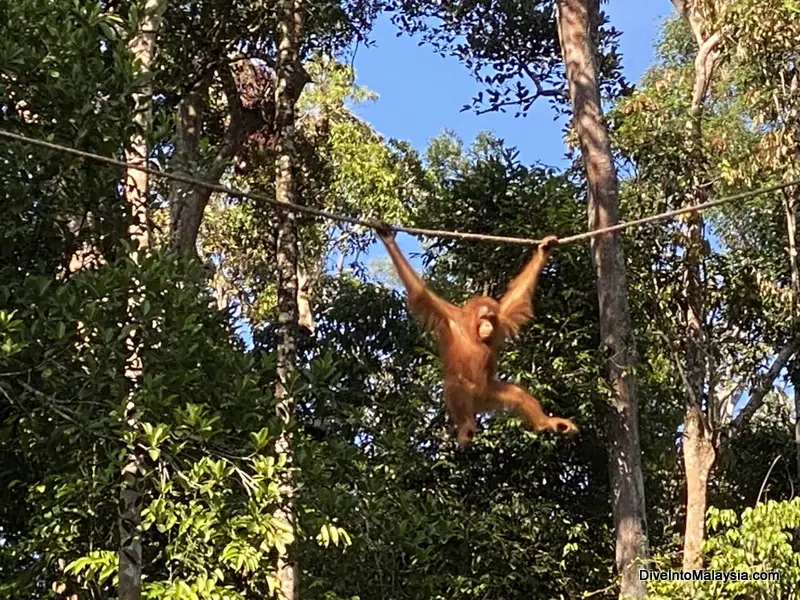
I just visited during fruiting season when sightings are more difficult, and I was able to see two orangutans quite close and very awesome.
Sound interesting? Keep reading for our full review of visiting the Semenggoh Wildlife Centre Kuching including opening hours, feeding times, the Semenggoh Wildlife Centre entrance fee, how to get here and what it’s like to visit here.
By the end of this Semenggoh Wildlife Centre blog, you’ll know whether this is somewhere you want to visit or not.
Or if you already know you want to go, click here to book a half day tour now.
Travelling to Malaysia? Click here to download your free Malaysia Trip Planning checklist. We’ll help you get ready for your trip!
Have any questions? Join our Malaysia Travel Planning Facebook group here now! It’s the perfect place to ask any questions and to be inspired.
Contents
Semenggoh Wildlife Centre

The Semenggoh Wildlife Centre history starts in 1975. At this time, the Semenggoh Wildlife Rehabilitation Centre Kuching was set up as a sanctuary for orangutans who were being kept captive as pets, were injured or orphaned.
Today, it still helps rehabilitate these orangutans as well as serves as a habitat for them and as a place for people to learn more about these animals. Its name was changed to Semenggoh Wildlife Centre in 2000.
The orangutans here are semi-wild. While they can roam the forest at will, they often return at feeding times for a meal. This is less likely to happen in fruiting season when there is plenty in the forest to support them (this varies).

They are fed because the reserve, even at 653 hectares, is not big enough to naturally supply food for all the orangutans here.
This Semenggoh nature reserve is also a habitat for flora and fauna and you may be able to spot giant squirrels, pygmy squirrels, gibbons and many types of birds.
The Semenggoh Wildlife Reserve, which is home to the wildlife centre, started life in 1920 and was the first protected forest reserve in Sarawak.
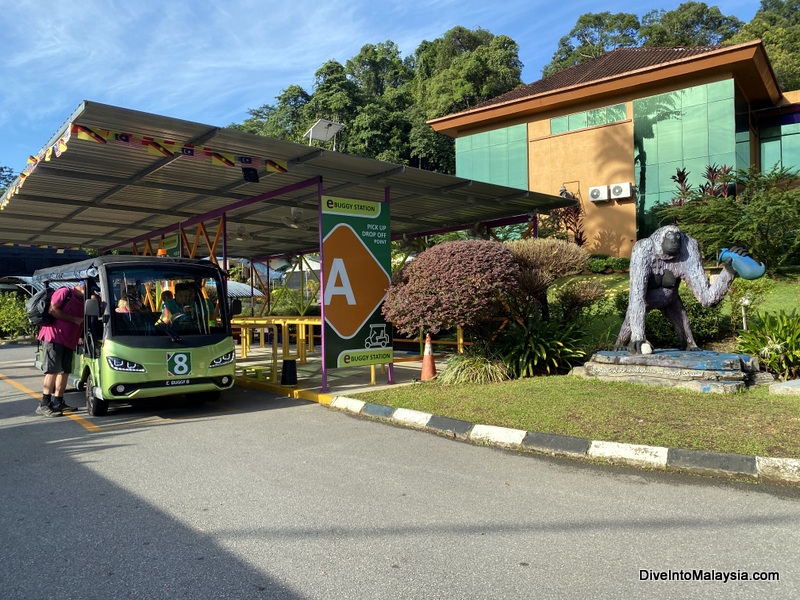
When you visit here, you start by buying your tickets (more information below) at the entry to the reserve. You can then take an electric buggy in to the main area (RM15 return for a foreigner) or walk which takes about 20 minutes. It’s a hilly walk on tarmac, although nothing extreme.

The electric buggy takes you near the gallery and first platform mentioned below. There are still stairs and a short walk to reach these. There are toilets in a couple of places.

The walk to the main platforms is short but not made for strollers or wheelchairs.
Here’s more information about the Semenggoh Wildlife Centre activities. I have ordered them based on the order in which you are likely to visit them.
Botanical Research Centre

The first place you’ll notice after entering the site (and just past the electric buggies) is the Botanical Research Centre.
You can’t visit inside here, but there is a small orchid nursery, ethno-botanical gardens, a fruit orchard, a neat fernarium and a bamboo garden. This is one for flora lovers. I checked out some pitcher plants on my way past.
Semenggoh Orangutan Gallery
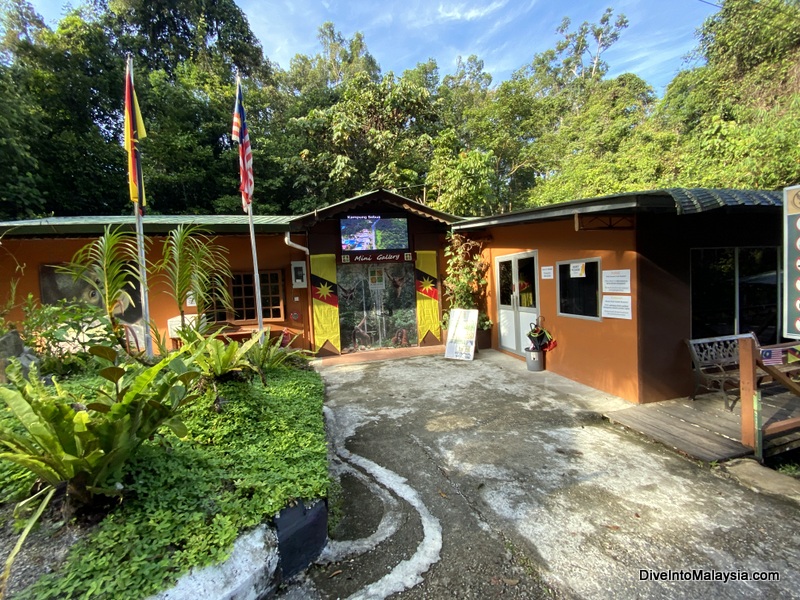
A good starting point is the Semenggoh Orangutan Gallery. In this small building, you can learn more about the orangutans, like that they are human’s closest relatives sharing nearly 97% of the same DNA!
There’s information about the differences between male and females, their lifecycles, eating habits, living habits and more.
There are also a few information boards around the orangutan Semenggoh Wildlife Centre. It is hard to make the time to come in here when you’re super keen to spot orangutans though!
This building is located before the platforms not far from where the electric buggy drops you off.
Semenggoh Platform 1
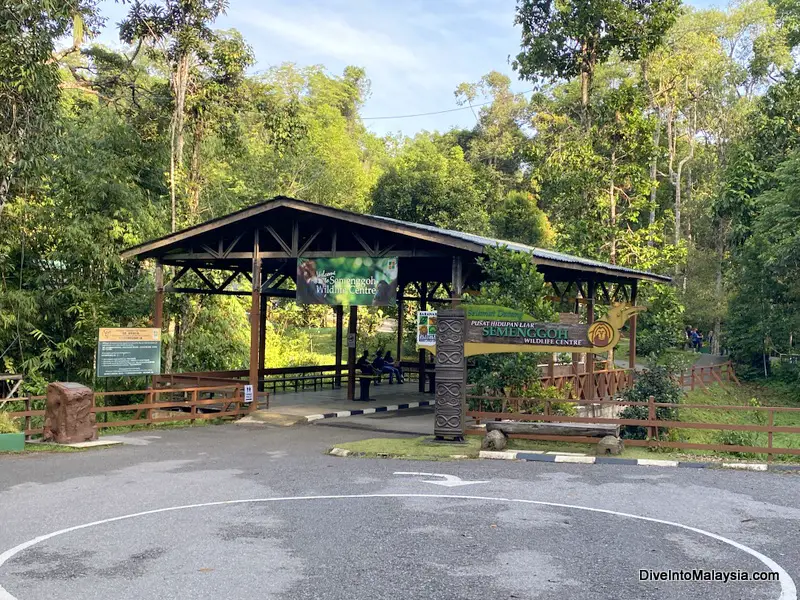
What I didn’t realise until I visited here is that there are additional platforms and not just the main one that you can see in many photos. The guides and rangers will help you understand where to go to see any orangutans that appear, but this first one is easily reached and where people wait for the main feeding time.

I recommend you get here before the official starting time as we arrived here at 8:30am, and they were trying to attract orangutans already. We just missed out on seeing one that had come and gone.
Around here are also some useful information boards. You may also get lucky and see some orangutans here after the official feeding time.
Semenggoh Feeding Time

The main option of the Semenggoh Wildlife Centre activities is definitely this! It’s what everyone comes for.
Feeding times are programmed for an hour. However, since we are dealing with wild animals, they can appear whenever they like. Before you head to the feeding platforms, there is a short briefing on what to expect and the rules (like keeping 5 metres away from the orangutans and not making loud noises).
It’s then about a five minute walk to the platforms. Everyone walks together so it’s not the most pleasant walk I have done, but you are in beautiful surrounds.
At feeding time, the rangers feed the orangutans a variety of fruits, sugar cane and hard boiled eggs. They also feed one some milk when I was there.
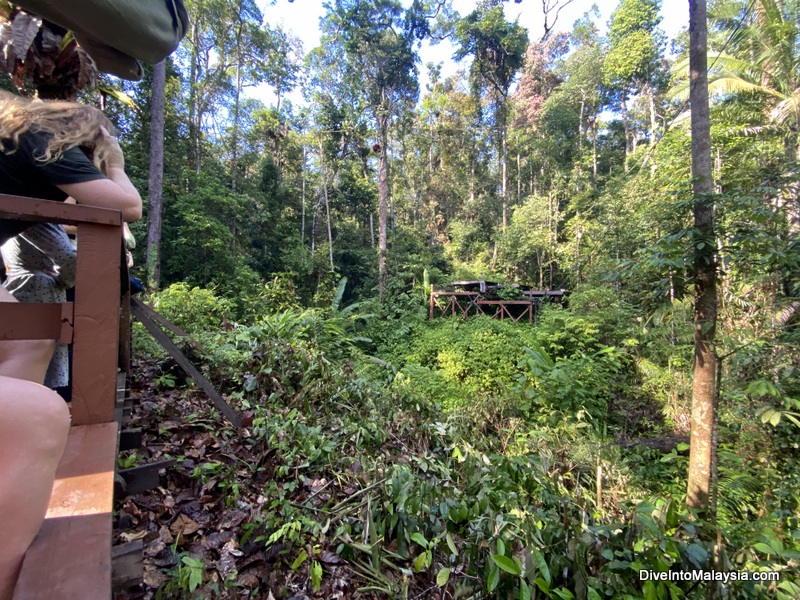
You may be unlucky and not see an orangutan or you may be very lucky and see many of the 31 that live here.
If you have been googling visiting this Semenggoh wildlife park, you may have read about Ritchie, the old alpha. Unfortunately, he seems to have moved on as he hasn’t been seen in awhile and there are currently two orangutans in the running to be the alpha.

I accidentally visited during fruiting season, so I was super happy to get to see two orangutans. They hung around for awhile and were total posers. It was awesome! They climbed in along the ropes, ate much of the food, posed a lot and did cool things like cracked open a coconut.

There were quite a few people there, but it was easy to get a good view and feel like I had a real orangutan experience. It’s absolutely amazing.
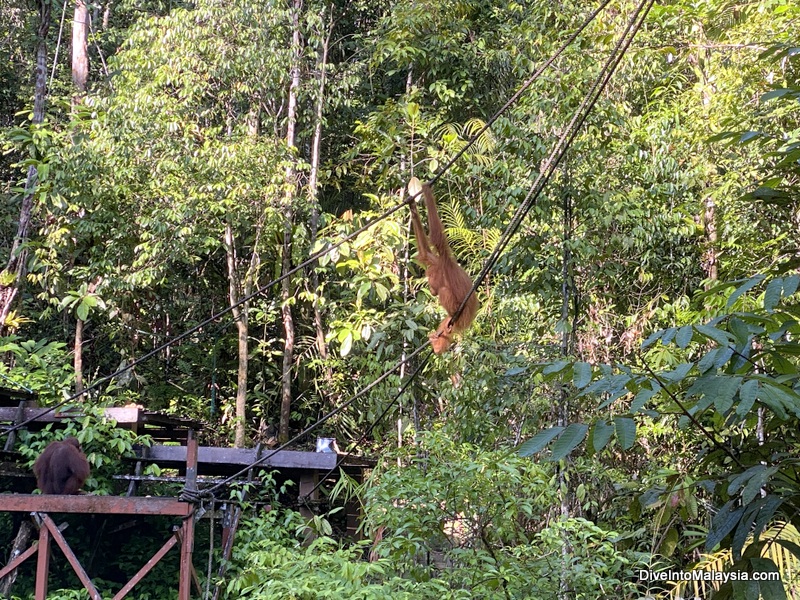
Once the orangutans left, this area was closed off. This occurred about 9:30am. But we then went back and looked at other areas of the reserve listed above.
Where Is Semenggoh Wildlife Reserve?
Semenggoh Wildlife Centre address: KM 20, Borneo Highland Road, 93250 Kuching, Sarawak
How To Visit Semenggoh Orangutan Wildlife Centre?
The easiest way to visit this Semenggoh orangutan Centre is to take a tour.
Half day tours (about three hours) will transport you to the site and back from your hotel, provide you with a guide to enrich the experience, include the tickets and make everything easy.
I recommend the tour I did here.
It’s a great way to do it as the tour price is similar to doing it all yourself anyway. I did not find our guide that informative though.
If you don’t want to do a tour and want to know how to get to Semenggoh Nature Reserve from Kuching, the easiest way is to get a Grab taxi. This costs about RM30 each way.
However, the downside is that getting one back afterwards can be difficult. So I recommend you talk to your driver on the way there and see if you can arrange a price so they will wait for you and take you back afterwards.
Finally, you can also catch a local bus here. The good news is that there is a free electric bus that you can take you here and then take you back into Kuching afterwards. It’s the 103 which leaves from the Sarawak State Legislative Building and stops at some useful places like the Sarawak Museum and the Kuching waterfront.
However, it does stop a lot of places with Semenggoh being the last stop so it is slow. Expect it to take about 90 minutes.

The other downside is that it runs every two hours with a departure time from Semenggoh Nature Reserve at 10am and 4pm. This is right at the end of the feeding times which means you need to leave the platforms early to make these departures. Otherwise, it’s a two hour wait until the next one.
To get here in time for the feedings, you also need to catch the buses that leave the Sarawak State Legislative Building at 6am or 12pm. It does add a lot of time to the visit.
You can find more information on the bus here.
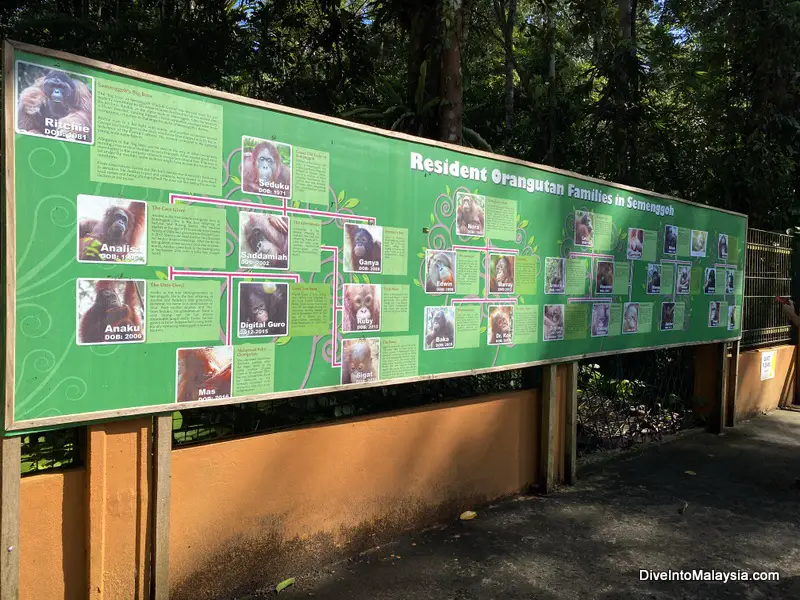
Semenggoh Wildlife Centre Opening Hours
The Semenggoh Wildlife Centre Malaysia is open daily from 8am – 10am in the morning and 2pm – 4pm in the afternoon. They shut off parts before the end of the Semenggoh feeding time. For example, if the orangutans have finished feeding and left the main platforms, you’ll be told to leave earlier.
It opens seven days a week including public holidays.

Semenggoh Wildlife Centre Feeding Time
Perhaps more important than the opening hours is the feeding times as this is when the action takes place.
At the time of publishing, these took place from 9am-10am and 3pm-4pm so time your visit for one of these sessions.
I recommend you visit at the first feeding time. If you are unlucky and don’t see any orangutans, you can use your ticket to visit again for the afternoon feeding time.
Note that orangutans can and do appear earlier than this, so it is worth arriving at least a half hour before.
Semenggoh Wildlife Centre Ticket Price
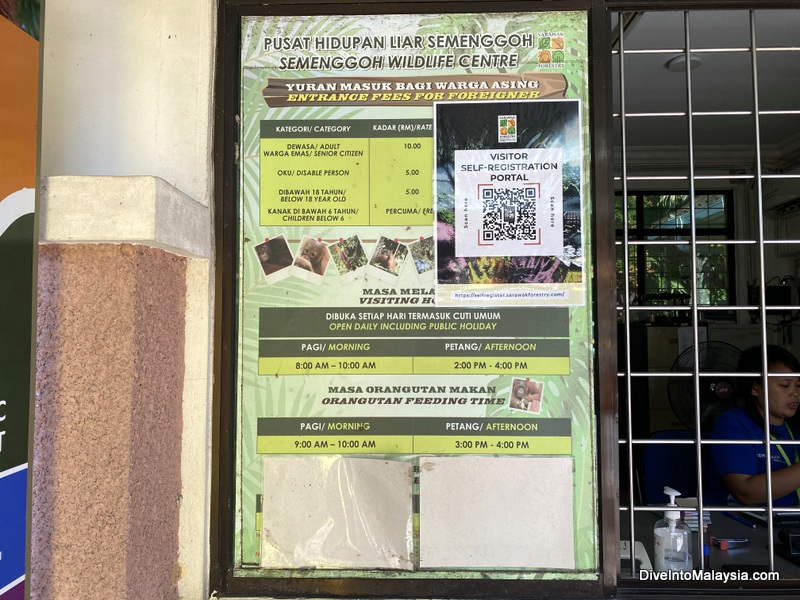
The Semenggoh Nature Reserve entrance fee is RM10 for foreign adults and RM5 (6-17 year olds) for foreign kids. Malaysians pay RM5 for adults and RM2 for kids. Children under 6 are free.
Your ticket enables you to visit both feeding times in a day.
Click here to join a tour now.
Final Words

Visiting the Semenggoh Wildlife Center is the best way to ensure you spot some orangutans during your time in Sarawak. It’s a quick and easy place to visit, and I very much enjoyed my visit here.
If you are heading to Sabah as well and deciding between visiting this Semenggoh Wildlife Reserve Centre and Sepilok Orangutan Rehabilitation Centre, there is more to see at Sepilok with the juvenile training area too. I saw many more orangutans there. Although it is also busier. I prefer the feeding platform experience at Semenggoh.
Ideally, though, I would head to both. You can’t see too many orangutans and, with sightings never guaranteed, take the opportunity when you have it. It’s recommended you visit outside the fruiting season.
Click here to book your tour now.
Looking for other things to do in Kuching? Find our full guide here. You can also find our full guide to where to stay in Kuching here and our full travel guide to Kuching here.
Planning a trip to Malaysia? Have any questions? Join our Malaysia Travel Planning Facebook group here now! It’s the perfect place to ask any questions and to be inspired!

